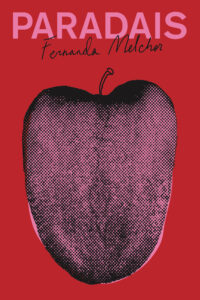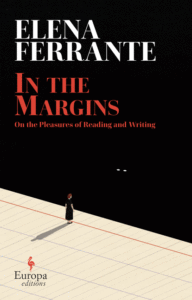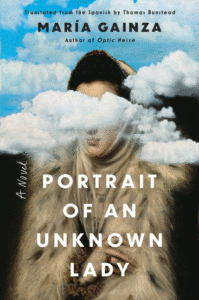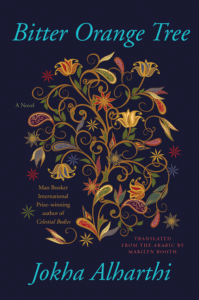
The Best Reviewed Literature in Translation of 2022
Featuring Olga Tokarczuk, Eleną Ferrante, Fernanda Melchor, Yoko Tawada, and More
We’ve come to the end of another bountiful literary year, and for all of us review rabbits here at Book Marks, that can mean only one thing: basic math, and lots of it.
Yes, using reviews drawn from more than 150 publications, over the next two weeks we’ll be calculating and revealing the most critically-acclaimed books of 2022, in the categories of (deep breath): Fiction; Nonfiction; Memoir and Biography; Sci-Fi, Fantasy, and Horror; Short Story Collections; Essay Collections; Poetry; Mystery and Crime; Graphic Literature; and Literature in Translation.
Today’s installment: Literature in Translation.
Brought to you by Book Marks, Lit Hub’s “Rotten Tomatoes for books.”
*
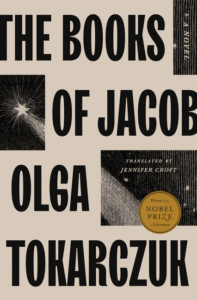
1. The Books of Jacob by Olga Tokarczuk, trans. by Jennifer Croft
(Riverhead)
26 Rave • 9 Positive • 4 Mixed • 1 Pan
“The Books of Jacob is finally available here in a wondrous English translation by Jennifer Croft, and it’s just as awe-inspiring as the Nobel judges claimed when they praised Tokarczuk for showing ‘the supreme capacity of the novel to represent a case almost beyond human understanding.’ In terms of its scope and ambition, The Books of Jacob is beyond anything else I’ve ever read. Even its voluminous subtitle is a witty expression of Tokarczuk’s irrepressible, omnivorous reach … The challenges here — for author and reader — are considerable. After all, Tokarczuk isn’t revising our understanding of Mozart or presenting a fresh take on Catherine the Great. She’s excavating a shadowy figure who’s almost entirely unknown today …
As daunting as it sounds, The Books of Jacob is miraculously entertaining and consistently fascinating. Despite his best efforts, Frank never mastered alchemy, but Tokarczuk certainly has. Her light irony, delightfully conveyed by Croft’s translation, infuses many of the sections … The quality that makes The Books of Jacobso striking is its remarkable form. Tokarczuk has constructed her narrative as a collage of legends, letters, diary entries, rumors, hagiographies, political attacks and historical records … This is a story that grows simultaneously more detailed and more mysterious … Haunting and irresistible.”
–Ron Charles (The Washington Post)
2. Paradais by Fernanda Melchor, trans. by Sophie Hughes
(New Directions)
18 Rave • 6 Positive
“Paradais is both more compact and more cogent [than Hurricane Season]. Rhythm and lexis work in tandem to produce a savage lyricism. The translator Sophie Hughes marvellously matches the author in her pursuit of a new cadence … From its first sentence, in fact, Paradais feels rhythmically propelled towards a violent climax. Full stops occur rarely enough to seem meaningful, Melchor using long lines of unbroken narrative to reel in her terrible ending … The author wants to understand the violence, not merely condemn it … The novel’s language, meanwhile, is both high-flown and street-smart, strewn with Veracruzian slang, the odd made-up word and many eye-watering expletives … Pressure builds remorselessly to a dreadful climax. It is an extraordinary feat of control, making Fernanda Melchor’s exceptional novel into a contemporary masterpiece.”
–Miranda France (Times Literary Supplement)
3. In the Margins: On the Pleasures of Reading and Writing by Elena Ferrante, trans. by Ann Goldstein
(Europa)
12 Rave • 12 Positive • 4 Mixed
“The lucid, well-formed essays that make up In the Margins are written in an equally captivating voice … Although a slim collection, there is more than enough meat here to nourish both the common reader and the Ferrante aficionado … Every essay here is a blend of deep thought, rigorous analysis and graceful prose. We occasionally get the odd glimpse of the author…but mainly the focus is on the nuts and bolts of writing and Ferrante’s practice of her craft. The essays are at their most rewarding when Ferrante discusses the origins of her books, in particular the celebrated Neapolitan Novels, and the multifaceted heroines that power them … These essays might not bring us any closer to finding out who Ferrante really is. Instead, though, they provide valuable insight into how she developed as a writer and how she works her magic.”
–Malcolm Forbes (The Star Tribune)
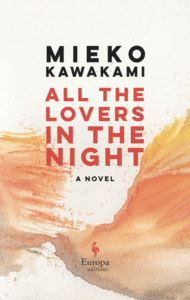
4. All the Lovers in the Night by Mieko Kawakami, trans. by Sam Bett and David Boyd
(Europa)
12 Rave • 4 Positive
“[All the Lovers in the Night] hinges on this double bind created by the feminine ideal: the gloom spawned by a woman’s inevitable failure to measure up to impossible standards of beauty and likability, coupled with a lack of any other available framework through which she can view herself or her peers … There is a cleverness with which All the Lovers in the Night addresses these changes, romantic and professional, in its protagonist’s life. By including alcoholism among them, Kawakami circumvents the shtick of stale ‘glow-up’ narratives, and preserves Fuyuko as a cipher … What makes Kawakami’s novel so brilliant is an understanding of why women might willingly adhere to regressive modes of performative femininity, even while they criticize it. The desire to be loved is no small thing … Kawakami’s novel is uncompromisingly candid in its appraisal of the harm women inflict on one another, while never losing sight of the overarching structures that lead them to do so in the first place. Compact and supple, it’s a strikingly intelligent feat.”
–Jo Hamya (The New York Times Book Review)
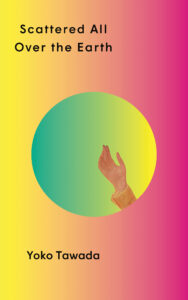
5. Scattered All Over the Earth by Yoko Tawada, trans. by Margaret Mitsutani
(New Directions)
9 Rave • 6 Positive • 1 Mixed
“… mordantly funny … More than simply international, her writing is translingual; she leaves the borders between languages open and allows them to cross-pollinate. To translate her into English is to excavate linguistic strata: Panska reads like a Japonic parody of Nordic syntax translated into a West Germanic language … Each character in Tawada’s ‘band of zigzag travelers’ is given chapters to narrate in the first person. These limited perspectives give rise to a comedy of intercultural misunderstandings that both move the plot forward and provide targets for Tawada’s sharp satire … Judging by the recent migrant crises that informed Tawada’s novel, it is a long-overdue lesson. By the time we are reading the trilogy’s final volume, the climate-fiction scenario Tawada drapes in the trappings of picaresque comedy will no longer seem speculative.”
–Ryan Ruby (The New York Times Book Review)
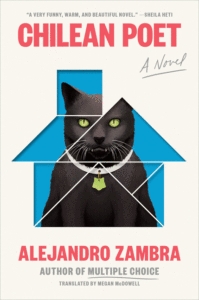
6. Chilean Poet by Alejandro Zambra, trans. by Megan McDowell
(Viking)
8 Rave • 9 Positive • 3 Mixed • 2 Pan
“There is a gentle joke in the title of Alejandro Zambra’s Chilean Poet that leads readers to expect some kind of highbrow Künstlerroman while actually delivering a novel of domesticity filled with prosaic records of daily life. This is partly because, as Mr. Zambra teases, Chile has so many damn poets that the calling has lost its mystique and become a national industry. But the greater meaning has to do with the difficult poetic potentiality for inspiration and transcendence, which this splendid book finds in family relationships as much as in artistic creation … moves deftly among different points of view, arriving at Vicente’s maturation—inevitably, he too becomes a moody wannabe poet. His complicated reunion with Gonzalo is one of the best endings to a novel that I have read in years, a scene of beautiful emotional improvisation.”
–Sam Sacks (The Wall Street Journal)
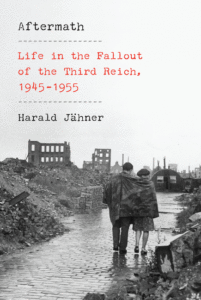
7. Aftermath: Life in the Fallout of the Third Reich, 1945-1955 by Harald Jähner, tr. by Shaun Whiteside
(Knopf)
7 Rave • 8 Positive • 1 Mixed
Read an excerpt from Aftermath here
.. a scholarly masterpiece which is also a good read … The material is as grim as can be imagined, and Jähner pulls no punches. But he doesn’t allow his story to degenerate into a catalogue of horrors. Instead, we are offered anecdotes and incidents, each memorable, many illustrated by newly discovered photographs, which build into a history which reads like a prelude to Waiting for Godot, that great work of 1949. In vignette after vignette, people remain people, however apocalyptic the events they have just participated in or witnessed or had visited upon them.”
–James Hawes (The Spectator)
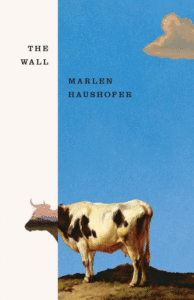
8. The Wall by Marlen Haushofer, trans. by Shaun Whiteside
(New Directions)
11 Rave • 1 Positive
“The return to the now solidly established horror, in realism’s steady pacing, is always more visceral than the initial encounter … a dystopian novel that gradually becomes a utopian one, as our narrator makes a new community. Haushofer’s inhabiting of animality is remarkably tender and selfless … Haushofer is a rather terrifying writer, brutal both in her unillusioned clarity and in the calm with which she tracks the consequences of her fictional premises … one of those books which effortlessly wring meaning upon meaning from their opening narrative conceit … pulses with a meaningful politics that is always in danger of being unravelled by the novel’s own movement toward a resigned, fatalistic, strictly apolitical naturism.”
–James Wood (The New Yorker)
9. Portrait of an Unknown Lady by María Gainza, trans. by Thomas Bunstead
(Catapult)
6 Rave • 8 Positive • 3 Mixed
“Portrait of an Unknown Lady, translated by Thomas Bunstead, is a seemingly more conventional novel about a high society con artist in 1960s Argentina. But like Optic Nerve, it’s a layered narrative told through impressionistic vignettes by a narrator who is attracted to the sadness and strangeness of others … Gainza’s novel becomes a puzzle as we question the most improbable biographical details. How much has been fabricated by the narrator? Does authenticity really matter? And exactly whose life story is she really interested in: artist, forger or authenticator? … Gainza weaves a fascinating, often confounding story about beauty, obsession and authenticity … Like Bolaño, she writes stories within stories, each with its own melancholy mood and unsolvable mystery … a novel with many beautiful, confounding moments. Maria Gainza is sharp, modern and playful, a writer who multiplies the possibilities for fiction.”
–Johanna Thomas-Corr (The Guardian)
10. Bitter Orange Tree by Jokha Alharthi, trans. by Marilyn Booth
(Catapult)
7 Rave • 6 Positive • 3 Mixed
Listen to an excerpt from Bitter Orange Tree here
“Beautifully translated by Marilyn Booth in the poignant, lyrical style of the original Arabic, Bitter Orange Tree is a deeply emotional, largely autobiographical novel permeated with regret, even guilt … lays bare the realities of rural life in Oman’s highly traditional society … Alharthi is highly attuned to the hardships of old age and is particularly adept at describing the stifling traditions of the Omani patriarchy … Beyond the inherent interest of its context, Bitter Orange Tree will also strike a chord with those who have either voluntarily or involuntarily left their homeland and are torn between the longing for a new life and a yearning for the security of the old ways.”
–Diana Darke (Times Literary Supplement)
*
Our System:
RAVE = 5 points • POSITIVE = 3 points • MIXED = 1 point • PAN = -5 points
Book Marks
Visit Book Marks, Lit Hub's home for book reviews, at https://bookmarks.reviews/ or on social media at @bookmarksreads.










